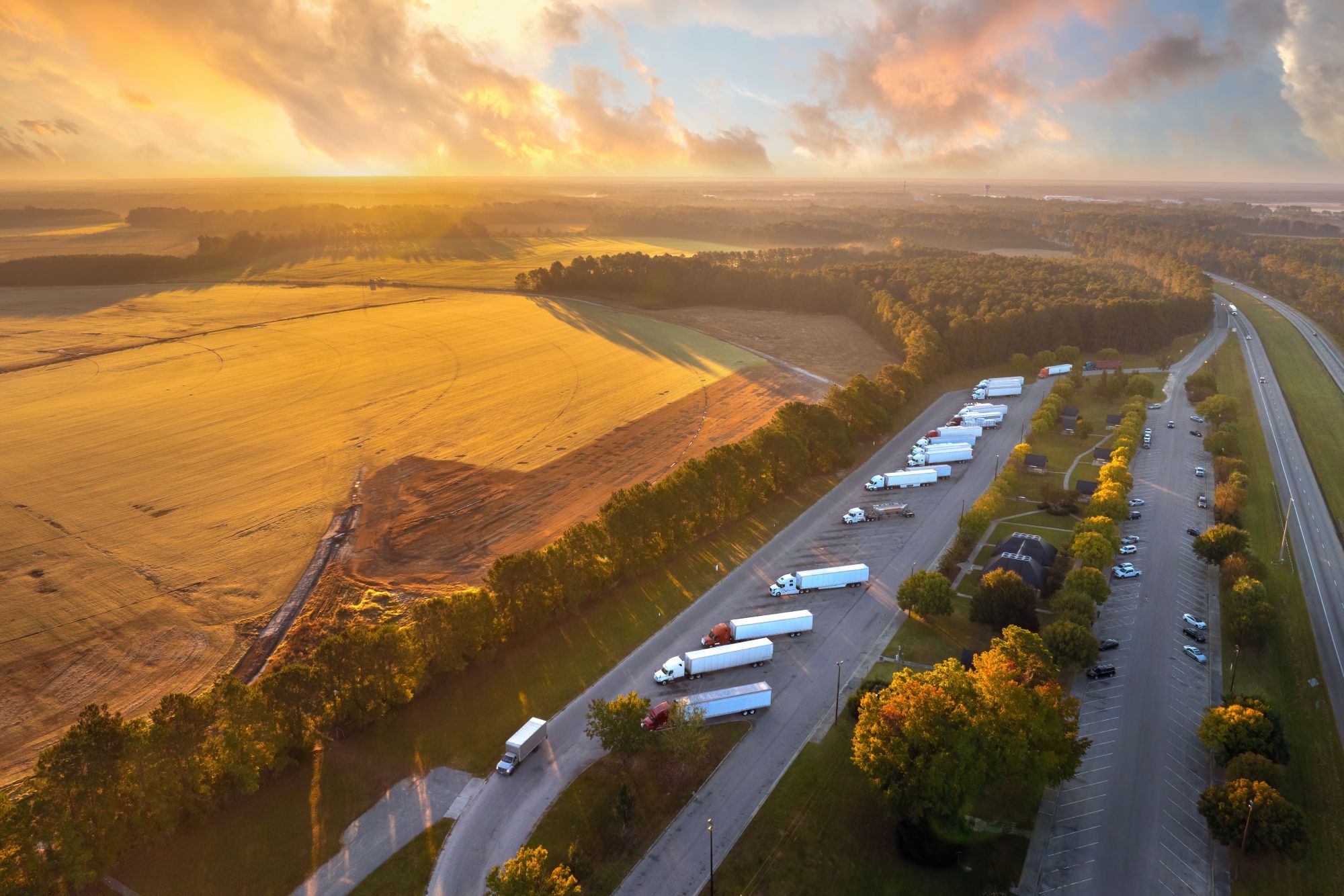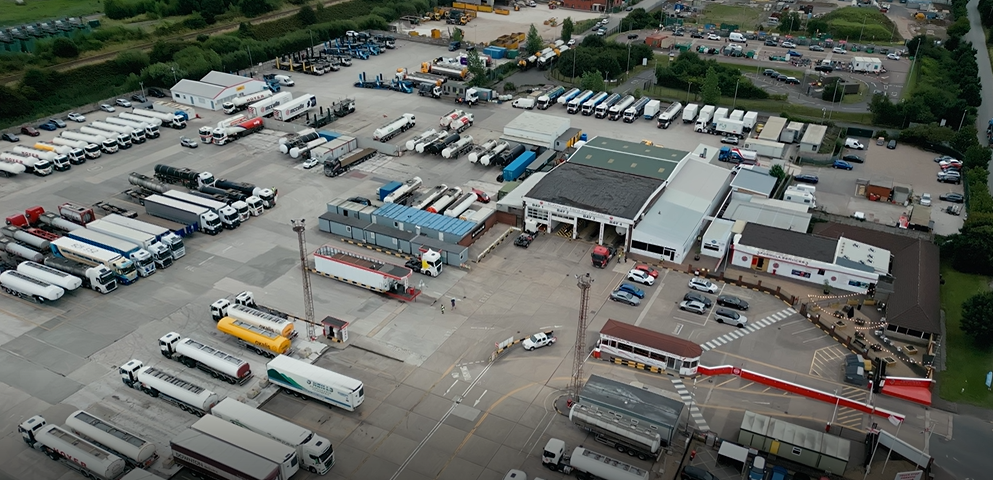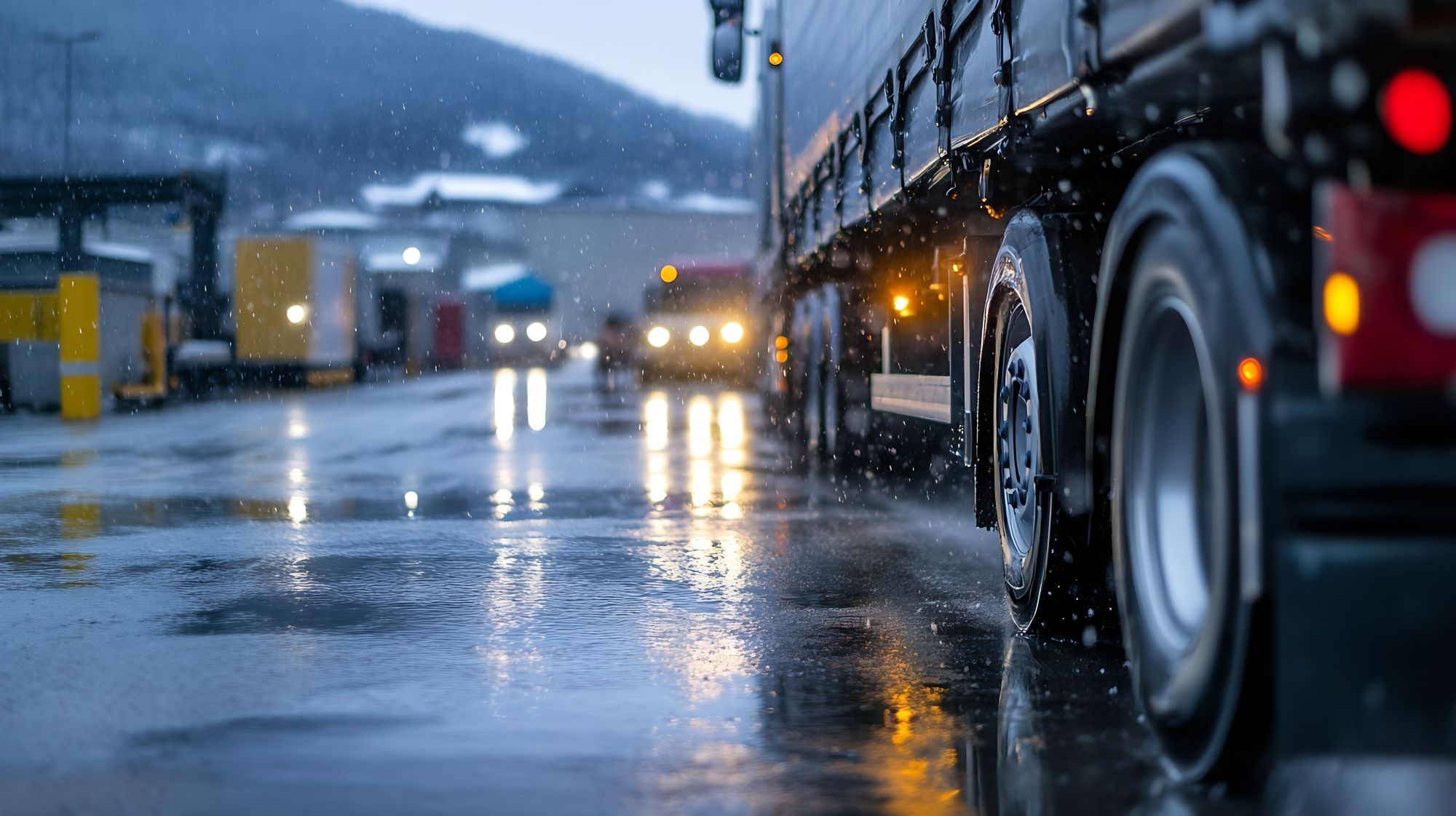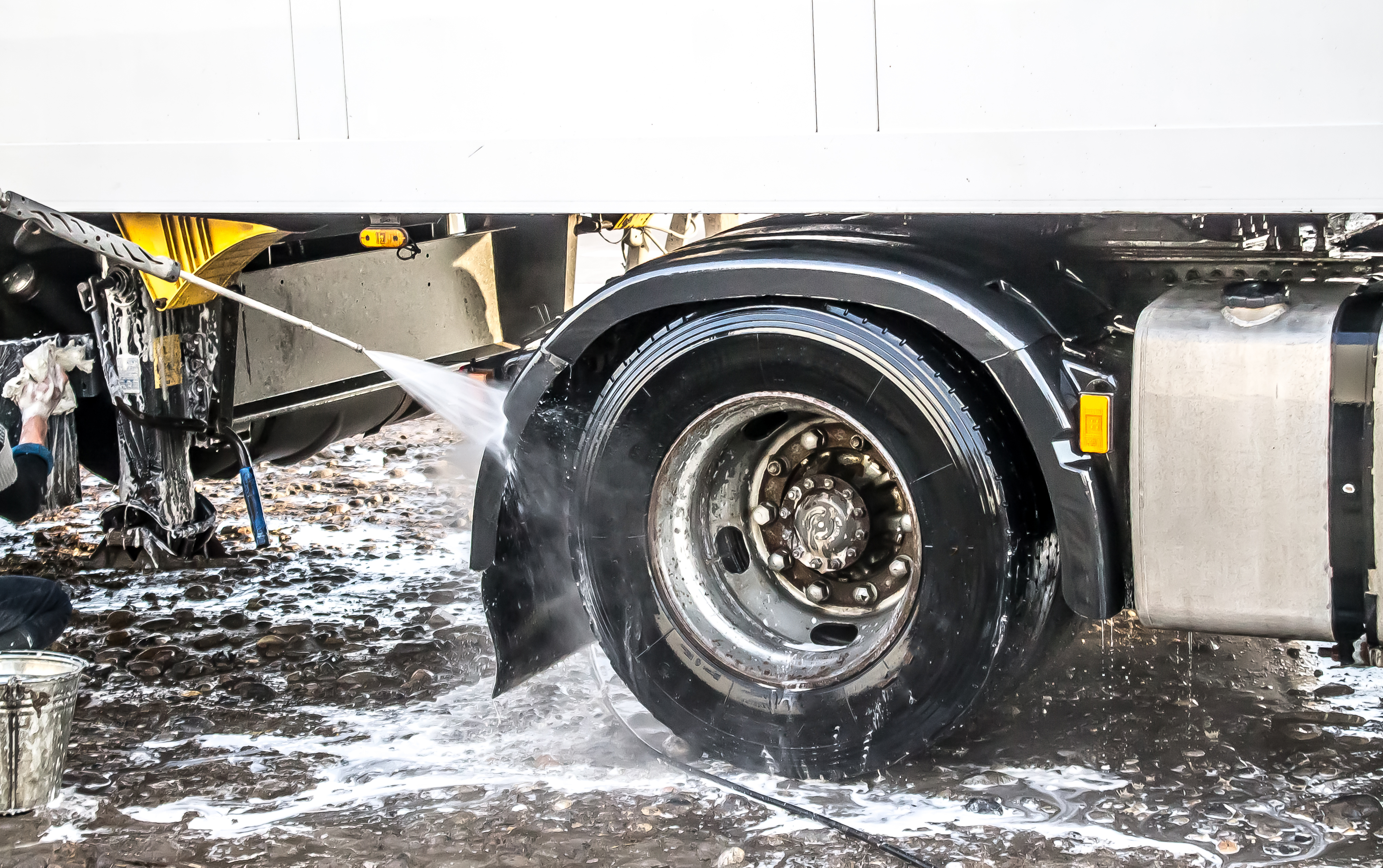
Miranda Blake
So finden Sie eine Lkw-Waschanlage in Ihrer Nähe
Erstellt: 23.10.2024
•
Aktualisiert: 01.11.2024
Ganz gleich, ob Sie Fracht über internationale Grenzen hinweg transportieren oder eine Flotte von Schwerlastkraftwagen verwalten - eine gründliche Reinigung und gute Wartung Ihrer Fahrzeuge kann sich erheblich auf deren Leistung, Langlebigkeit und allgemeine Betriebseffizienz auswirken. Zum Glück ist es einfach, eine zuverlässige und bequeme Lkw-Waschanlage in Ihrer Nähe zu finden - lesen Sie weiter, um zu erfahren, wie.
Was beinhaltet eine Lkw-Wäsche?
Für die Fahrzeugreinigung benötigen Lkw spezielle Einrichtungen und Ausrüstungen, die ihren besonderen Anforderungen gerecht werden.
Standort und Erreichbarkeit
Die Lkw-Waschanlagen sind strategisch an den großen Autobahnen und Autobahnausfahrten positioniert, so dass sie leicht zugänglich sind und den Verkehr von Schwerlastfahrzeugen nur minimal stören. So können Fernfahrer schnell und bequem zu den erforderlichen Reinigungsdiensten gelangen, ohne durch verstopfte Straßen fahren zu müssen.
Anforderungen an Ausrüstung und Einrichtung
Da Lkw robustere und leistungsstärkere Maschinen benötigen, um den Schmutz, den Dreck und die Ablagerungen zu beseitigen, die sich auf ihren ausgedehnten Oberflächen ansammeln, verfügen die Waschanlagen in der Regel über größere Buchten, größere Abstände und Spezialgeräte - einschließlich Hochdruckreiniger und Bürsten mit großer Reichweite.
Ressourcenverbrauch und Kosten
Die Reinigung eines Lkw erfordert in der Regel einen höheren Wasser- und Stromverbrauch aufgrund der schieren Größe und des Volumens der Fahrzeuge sowie der Notwendigkeit intensiverer Reinigungsverfahren. Ein solcher erhöhter Ressourcenverbrauch führt zu höheren Betriebskosten, die sich dann im Preis niederschlagen.
Dienstleistungsangebot und Spezialisierung
Eine Lkw-Waschanlage konzentriert sich in der Regel auf eine umfassende Außenreinigung, einschließlich spezieller Dienstleistungen wie Motorentfettung und Schmutzfängerreinigung, um den besonderen Anforderungen und Herausforderungen bei der Sauberhaltung von schweren Nutzfahrzeugen gerecht zu werden.
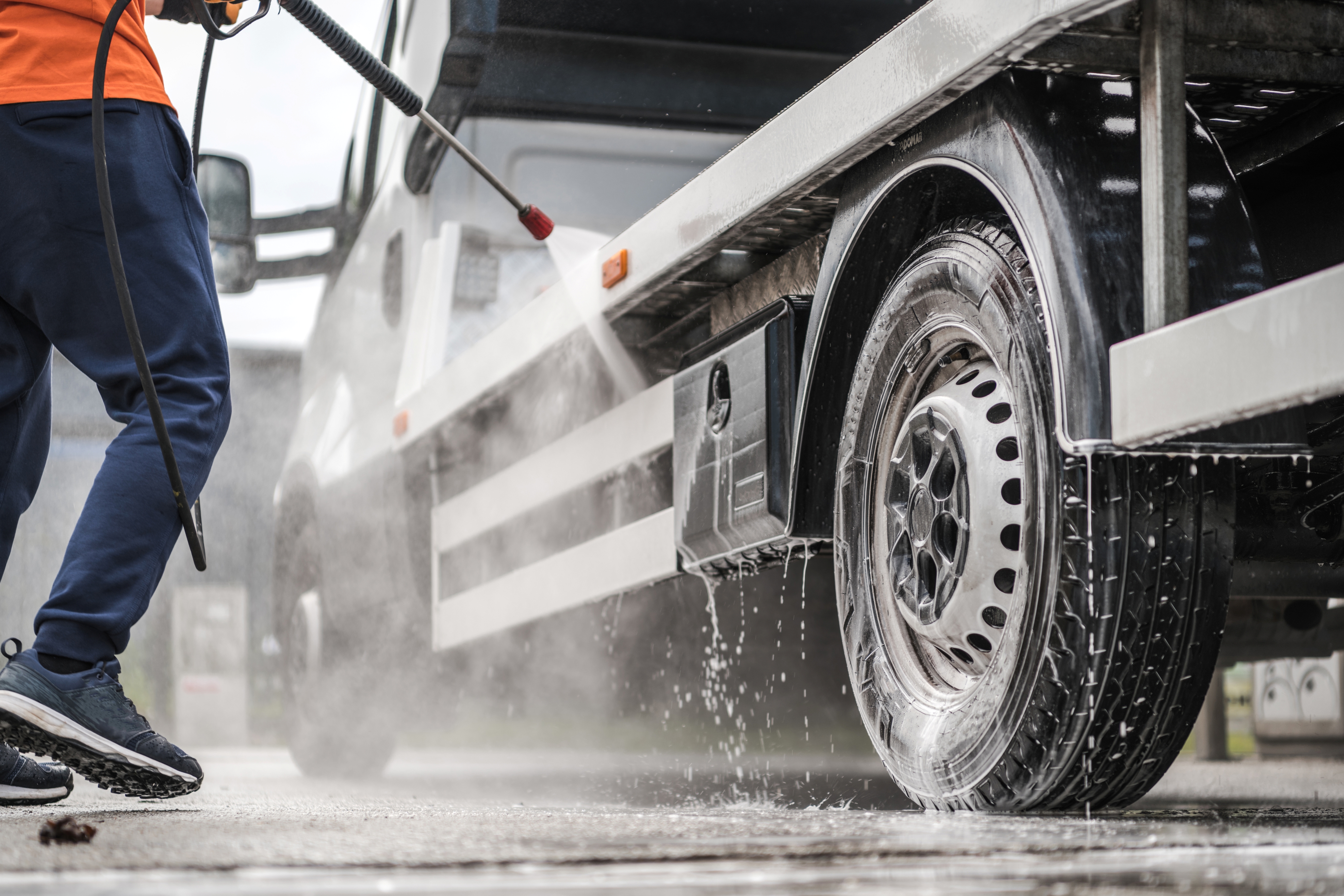
Navigieren in der Lkw-Waschlandschaft mit SNAP
Die richtige Anlage für Ihre Bedürfnisse zu finden, kann eine entmutigende Aufgabe sein. Hier kommt SNAP ins Spiel, ein Anbieter integrierter Dienstleistungen für das Straßentransportgewerbe, um Ihre Reise zu vereinfachen.
Umfangreiches Netz von Lkw-Waschanlagen
Unser Netz erstreckt sich über ganz Europa und umfasst über 230 Standorte, die speziell auf die Bedürfnisse von Nutzfahrzeugbetreibern zugeschnitten sind. Diese sind strategisch entlang der wichtigsten Autobahnen und Verkehrsknotenpunkte positioniert, so dass die Fahrer die erforderlichen Reinigungsdienste leicht erreichen können, ohne ihre Fahrpläne oder Routen zu unterbrechen.
Werfen Sie einen Blick auf unsere [SNAP-Karte] (https://snapacc.com/map/) und sehen Sie, wie Sie Einrichtungen in Ihrer Nähe finden.
Nahtlose Integration
SNAP Account ist in das Netzwerk von LKW-Waschanlagen integriert und ermöglicht es Fahrern und Flottenbetreibern, ihre Dienstleistungen bequem über ein einziges, sicheres Konto zu bezahlen. Dies macht Bargeld oder mehrere Zahlungsmethoden überflüssig, vereinfacht die Reinigung und bietet eine umfassende Lösung für die Verwaltung der Flottenausgaben.
Maßgeschneiderte Lösungen für die Lkw-Wäsche
Von der Hochdruck-Außenreinigung bis hin zur speziellen Unterbodenwäsche und Motorentfettung sind die Lkw-Waschanlagen von SNAP mit der richtigen Ausrüstung und dem nötigen Fachwissen ausgestattet, um eine gründliche und effiziente Arbeit zu gewährleisten.
Sichere und zugängliche Parkplätze im Depot
Zusätzlich zu unseren Lkw-Waschdiensten bieten wir auch ein Netz von sicheren und zugänglichen Depot-Parkplätzen in ganz Europa an. Diese exklusiv für SNAP-Kontoinhaber reservierten Parkplätze bieten verbesserte Sicherheitsmerkmale und die Möglichkeit, Parkplätze über unsere mobile App intruck im Voraus zu reservieren. Dies gibt den Fahrern die Gewissheit, dass ihre Fahrzeuge sicher und zugänglich sind.
Optimiertes Flottenmanagement mit SNAP
Durch die Integration unseres umfassenden Dienstleistungsangebots können Fuhrparkbetreiber ihre Abläufe rationalisieren und eine höhere Effizienz erreichen. Von der nahtlosen Lkw-Wäsche und dem sicheren Parken bis hin zum Kraftstoffmanagement und den Zahlungen für die Dartford-Kreuzung - unsere Lösungen ermöglichen es Flottenmanagern, sich auf ihre Kerngeschäftsziele zu konzentrieren und gleichzeitig die Vorteile der Technologie zur Optimierung ihrer Prozesse zu nutzen.
Steigern Sie die Leistung Ihrer Flotte mit SNAP
Die Aufrechterhaltung der Sauberkeit und des Wohlbefindens Ihrer Nutzfahrzeuge ist ein entscheidender Aspekt für die Sicherstellung einer hervorragenden Betriebsleistung. Durch die Nutzung des umfangreichen Netzwerks spezialisierter Einrichtungen von SNAP können Sie die Leistung und Langlebigkeit Ihrer Flotte steigern und gleichzeitig das gesamte Management Ihrer Transportvorgänge vereinfachen.
Unsere integrierten Dienstleistungen bieten eine umfassende Lösung, die auf die besonderen Bedürfnisse der Nutzfahrzeugindustrie zugeschnitten ist. Wir ermöglichen es Ihnen, sich auf das Wesentliche zu konzentrieren - die sichere und effiziente Zustellung Ihrer Ladung bei gleichzeitiger Minimierung des Aufwands und Maximierung der Rentabilität Ihres Unternehmens.
Lassen Sie SNAP Ihr zuverlässiger Partner sein, wenn es darum geht, den tadellosen Zustand Ihrer Fahrzeuge zu erhalten. Melden Sie sich noch heute kostenlos an!
